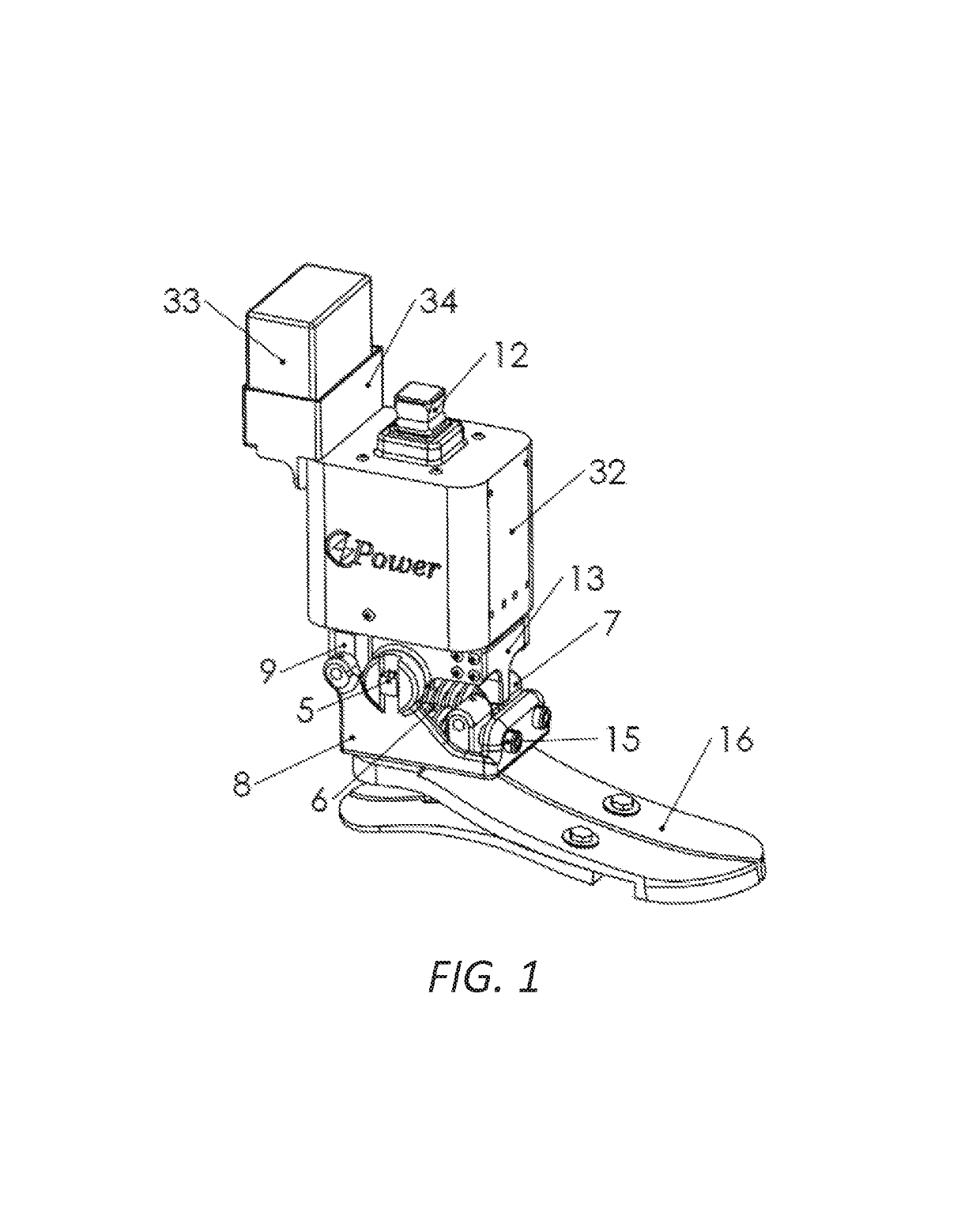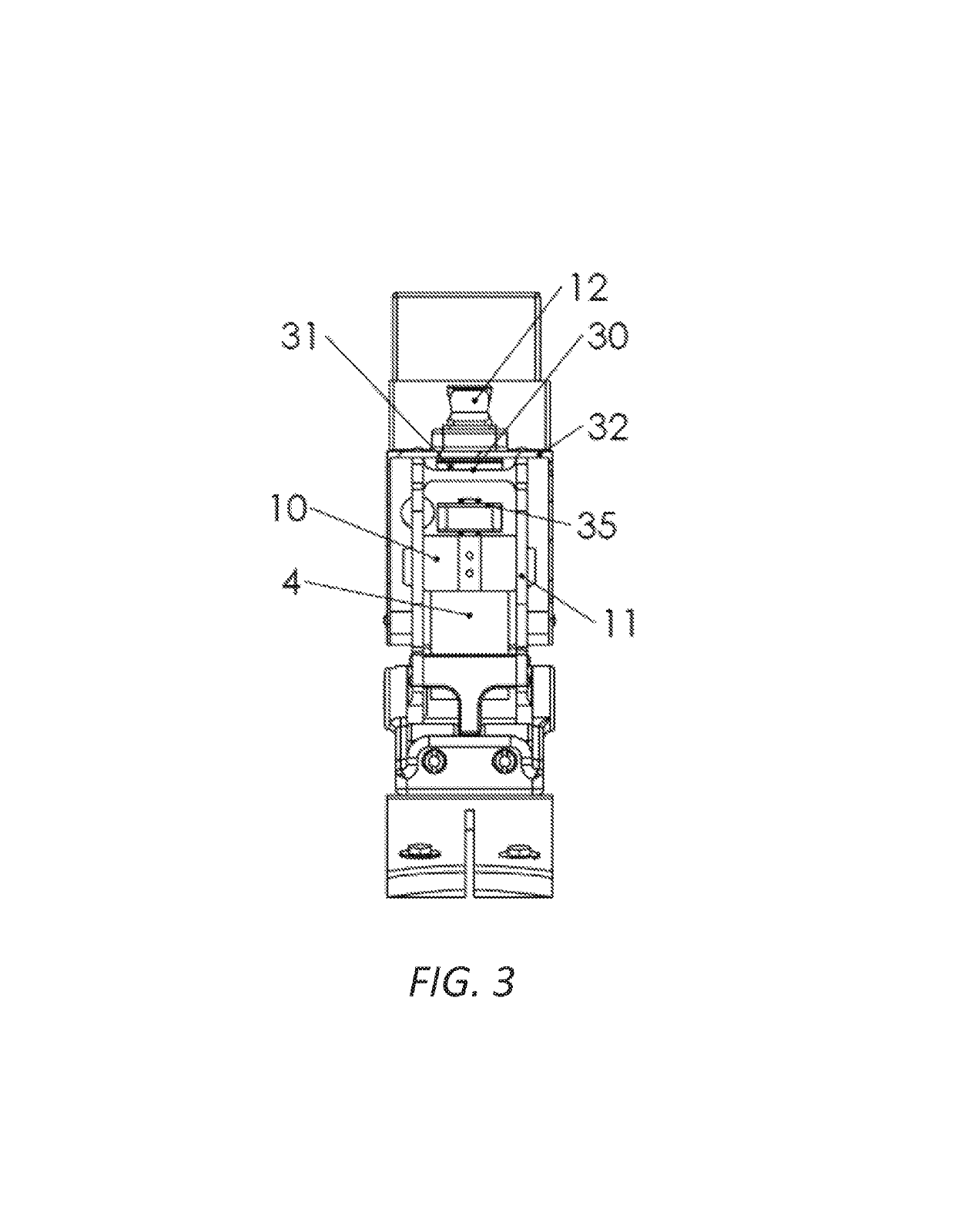Ankle-foot prosthesis device
a prosthesis device and klefoot technology, applied in the field of klefoot prosthesis devices, can solve the problems of inability to provide net positive work, hindering the rehabilitation of transtibial amputees with passive prosthesis, and hindering the rehabilitation of more natural gait behavior of transtibial amputees, so as to achieve the reduction of system energy consumption, torque and power requirements of actuators, and mechanical energy. negative
- Summary
- Abstract
- Description
- Claims
- Application Information
AI Technical Summary
Benefits of technology
Problems solved by technology
Method used
Image
Examples
Embodiment Construction
[0021]Embodiments of the present invention relate to powered ankle-foot prosthesis utilizing an actuator in combination with elastic components. The invention is minutely described with reference to the attached figures; the reference numerals are used to designate similar elements.
[0022]FIGS. 1-4 shows an embodiment of an ankle-foot prosthesis in accordance with the inventive aspects described herein. An elastic foot 16 is used for shock absorption during a heel-strike portion of a gait. The elastic foot 16 can be embodied as a carbon fiber foot, or any suitable material of sufficient strength and weight for use in an ankle-foot prosthesis. As described herein, elastic foot refers to any type of shock-absorbing foot which can utilize various types of features or mechanisms (e.g. elastomers, spring mechanism, resilient blade, piston, etc.). The ankle-foot prosthesis includes a foot mount 20 for attaching elastic foot 16. Foot mount 20 can include a planar surface with a threaded hol...
PUM
 Login to View More
Login to View More Abstract
Description
Claims
Application Information
 Login to View More
Login to View More - R&D
- Intellectual Property
- Life Sciences
- Materials
- Tech Scout
- Unparalleled Data Quality
- Higher Quality Content
- 60% Fewer Hallucinations
Browse by: Latest US Patents, China's latest patents, Technical Efficacy Thesaurus, Application Domain, Technology Topic, Popular Technical Reports.
© 2025 PatSnap. All rights reserved.Legal|Privacy policy|Modern Slavery Act Transparency Statement|Sitemap|About US| Contact US: help@patsnap.com



